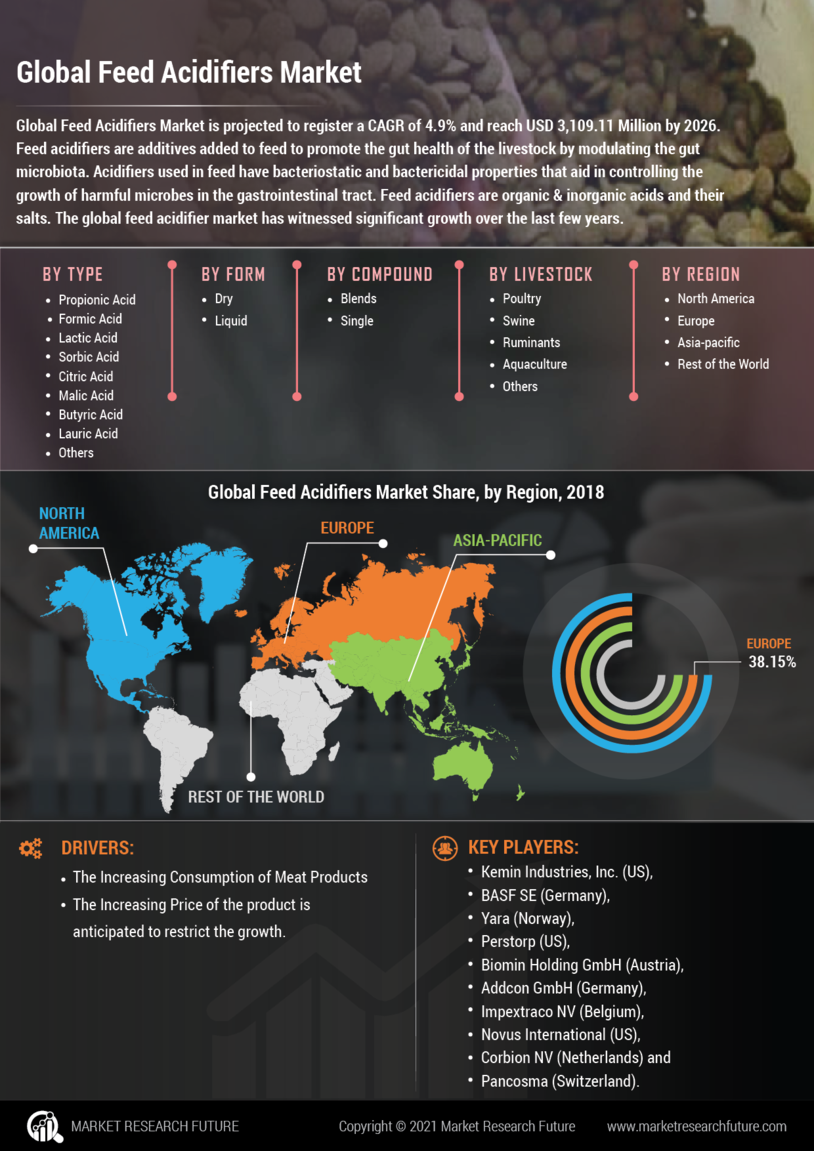Feed Acidifiers Market Summary
As per Market Research Future Analysis, the global feed acidifiers market is projected to grow at a CAGR of 4.9% until 2027, reaching a market value of USD 3,109.11 million. Feed acidifiers are essential in the livestock industry, promoting gut health by balancing gut bacteria and eliminating harmful pathogens. The COVID-19 pandemic impacted production due to supply chain disruptions and increased raw material costs, leading to higher prices for consumers. The rising middle class in developing nations and the demand for meat in developed countries are key drivers of market growth. However, high costs and the availability of effective substitutes pose challenges to market expansion.
Key Market Trends & Highlights
The feed acidifiers market is characterized by significant growth opportunities and competitive dynamics.
- CAGR of 4.9% expected until 2027; Market value projected at USD 3,109.11 million.
- European Union holds the largest market share at 38.15% in 2019; CAGR for the region is 4.4%.
- Kemin Industries leads in R&D, developing innovative products like Aleta for gut health.
- Liquid form of feed acidifiers is preferred for affordability and ease of use among farmers.
Market Size & Forecast
| Current CAGR | 4.9% |
| Market Size in 2027 | USD 3,109.11 million |
| Largest Regional Market Share in 2019 | European Union |
Major Players
Kemin Industries, Inc. (US), BASF SE (Germany), Yara (Norway), Perstorp (US), Biomin Holding GmbH (Austria), Addcon GmbH (Germany), Impextraco NV (Belgium), Novus International (US), Corbion NV (Netherlands), Pancosma (Switzerland)















Leave a Comment